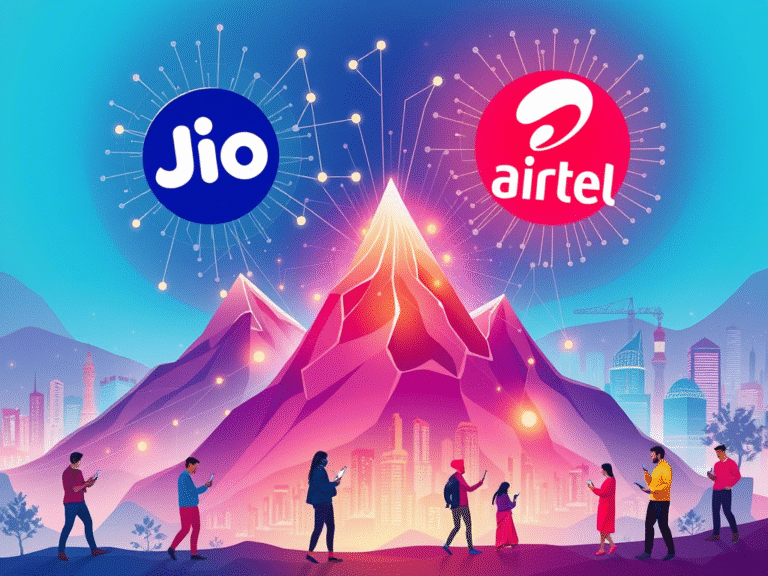How to Use Semantic SEO for Better Rankings in 2025
Looking to dominate search results in 2025? Semantic SEO is your secret weapon.
Google has evolved far beyond simple keyword matching. Today’s search algorithms understand context, meaning, and user intent like never before. Recent data shows that websites implementing semantic optimization strategies are seeing 2x more featured snippet placements and significantly better visibility in Google’s AI-powered search results.
The days of stuffing keywords into content are over. Modern search optimization focuses on creating meaningful, contextual content that truly serves your audience while satisfying search engine algorithms.
In this comprehensive guide, we’ll walk you through everything you need to know about semantic optimization and how to implement it effectively for better rankings in 2025.
Table of Contents
What is Semantic SEO?
Semantic SEO is the practice of optimizing your content around meaning and user intent rather than just targeting exact-match keywords. It’s about helping search engines understand not just what your content says, but what it actually means.
Think of it this way: instead of just targeting the keyword “fitness,” a semantic approach would include related concepts like “workout routines,” “exercise equipment,” “nutrition planning,” and “wellness tips.” This creates a rich tapestry of content that search engines can better understand and match to user queries.
When you implement this strategy, you’re not just checking boxes for algorithms – you’re creating genuinely helpful content that answers real questions your audience is asking. It’s a win-win approach that builds authority while improving your search visibility.
How Google Understands Meaning Beyond Keywords
Google’s search technology has come a long way since its early days. Through natural language processing (NLP) and machine learning, Google now analyzes the relationships between words, understands context, and interprets user intent with remarkable accuracy.
Major algorithm updates like BERT in 2019 and MUM in 2021 marked a turning point. Google can now understand “the full context of a word by looking at the words before and after it,” something earlier algorithms couldn’t do effectively.
This shift means Google now prioritizes content that demonstrates semantic understanding through:
- Topic clusters that group related content around main themes
- Entity recognition for known concepts, people, and brands
- Structured data that provides clear context about your content
- Natural language patterns that mirror how people actually communicate
Understanding this evolution is crucial for anyone serious about semantic optimization success in 2025. For deeper insights into how Google’s algorithms work, check out Google’s Search Central documentation.
Why Traditional SEO Methods Are Becoming Obsolete
The SEO landscape has transformed dramatically, making old-school tactics like keyword stuffing and excessive backlinking not just ineffective, but potentially harmful to your rankings.
Google’s algorithms now prioritize content quality, topical relevance, and user experience over simple keyword density. Sites that cling to outdated methods risk losing visibility as search engines become increasingly sophisticated at identifying and penalizing manipulative practices.
According to Google’s Quality Rater Guidelines, the focus has shifted to E-E-A-T (Experience, Expertise, Authoritativeness, Trustworthiness) as key ranking factors.
To stay competitive, businesses need to embrace integrated semantic optimization approaches that include structured data implementation, comprehensive topic coverage, and content that genuinely serves user needs.
Traditional SEO vs. Semantic SEO: The Key Differences
Understanding the distinction between traditional and semantic SEO is essential for modern digital marketing success.
Traditional SEO focuses on:
- Specific keyword targeting and density
- Exact-match optimization
- Individual page optimization
- Basic keyword research
Semantic optimization emphasizes:
- Comprehensive topic coverage
- Context and meaning
- User intent alignment
- Relationship-based content structure
| Aspect | Traditional SEO | Semantic SEO |
|---|---|---|
| Keyword Strategy | Targets specific keywords and their density | Focuses on topic clusters and semantic relationships |
| Content Approach | Optimizes for exact keyword matches | Prioritizes context, meaning, and comprehensive coverage |
| User Intent | Often secondary to keyword targeting | Central to content strategy and optimization |
| Content Depth | Limited to individual keyword targeting | Emphasizes thorough, authoritative topic coverage |
| Algorithm Focus | Aims for keyword-based rankings | Addresses modern NLP and machine learning algorithms |
| Success Metrics | Keyword ranking positions | Meaningful traffic, engagement, and conversion alignment |
The Importance of Semantic SEO in 2025
With over 90% of content receiving no organic traffic from Google, simply using the “right keywords” is no longer sufficient. Semantic SEO ensures your content aligns with search intent, builds topical authority, and connects with how both algorithms and humans process information.
Semantic optimization also opens doors to enhanced search features like featured snippets, People Also Ask boxes, and better performance in AI-driven search experiences. When your content is structured around meaning and context, you signal quality, depth, and credibility to both search engines and users.
For businesses, this translates directly into more qualified leads and better conversion rates. This approach improves not just visibility but ensures your content reaches the right audience at the right time in their decision-making process.
Essential Elements of Semantic SEO
Successful semantic optimization implementation relies on several key components working together:
Semantic Search Understanding: This involves creating content that addresses the true meaning behind search queries, not just the surface-level keywords.
Entity Optimization: Recognizing and optimizing for entities – specific people, places, things, or concepts that search engines can identify and understand. Google’s Knowledge Graph helps connect these entities.
Knowledge Graph Integration: Structuring your content to connect with Google’s Knowledge Graph, which maps relationships between different entities and concepts.
Schema Markup: Implementing structured data to help search engines understand your content’s context and meaning more clearly. Learn more about implementation at Schema.org.
Latent Semantic Indexing (LSI): Using related terms and concepts that naturally occur together to build topical relevance. Tools like LSI Graph can help identify these relationships.
Co-occurrence Optimization: Understanding how terms appear together across the web to create more contextually relevant content.
Natural Language Processing Alignment: Creating content that matches how people naturally communicate and search.
Long-tail Keyword Integration: Targeting specific, conversational queries that reflect actual user intent.
Benefits of Implementing Semantic SEO
Adopting a semantic optimization strategy offers numerous advantages for businesses serious about their digital presence:
Enhanced User Engagement
When your content addresses user questions clearly and contextually, visitors stay longer and engage more deeply. Pages that match search intent see up to 52% lower bounce rates, sending strong relevance signals to Google.
Improved Authority and Trust
Google’s E-E-A-T framework (Experience, Expertise, Authoritativeness, Trustworthiness) heavily influences semantic optimization success. Content optimized for E-E-A-T earns 28% more visibility in search results over time.
Better Search Rankings
Semantic SEO improves keyword breadth and relevance, helping you rank for more long-tail queries. Pages optimized with topic depth rank for 4x more keywords on average, increasing your chances of appearing in rich results and featured snippets.
Superior Content Quality
Semantically optimized content naturally covers more ground, educating users while increasing session duration. Long-form, context-rich content generates 3x more traffic than standard blog posts.
Proven Semantic SEO Strategies for 2025
Here are actionable strategies to implement semantic optimization effectively:
1. Develop Keyword Clusters
Instead of targeting single keywords, create clusters of related terms that belong to the same semantic field. For example, if you’re writing about “digital marketing,” include related terms like “online advertising,” “social media strategy,” and “content marketing.”
2. Incorporate Natural Language Variations
Use synonyms and related terms naturally throughout your content. If your main topic is “web design,” also include terms like “website development,” “user interface design,” and “responsive design.”
3. Create Comprehensive Content
Develop in-depth content that covers topics thoroughly from multiple angles. Instead of surface-level coverage, provide expert insights, detailed explanations, and actionable advice.
4. Implement Structured Data
Use schema markup to provide clear context about your content. This helps search engines understand your content’s meaning and can improve your chances of appearing in rich results. Google’s Structured Data Testing Tool can help validate your implementation.
5. Answer Related Questions
Research and address questions from Google’s “People Also Ask” section. This improves your content’s semantic depth and helps you capture additional search traffic.
6. Use Content Optimization Tools
Leverage tools like SEMrush, Ahrefs, or AnswerThePublic to identify semantic opportunities and related terms you might have missed.
7. Optimize for Local Semantic Signals
For local businesses, incorporate location-based semantic elements, optimize your Google My Business listing, and create content around local events and attractions.
Why Semantic SEO is the Future
Semantic SEO represents the future of digital visibility because it aligns with how search engines are evolving. As AI-powered search experiences become more prevalent, the ability to create contextually relevant, meaning-rich content becomes increasingly valuable.
The shift from keyword matching to intent understanding means that businesses investing in semantic optimization today will be better positioned for tomorrow’s search landscape. It’s not just about ranking higher – it’s about creating content that genuinely serves your audience while building sustainable online authority.
Recent developments in AI search, including OpenAI’s SearchGPT and Google’s AI Overviews, further emphasize the importance of semantic understanding in content creation.
How YAAM Web Solutions Can Transform Your SEO Strategy
Implementing semantic optimization effectively requires expertise, the right tools, and a deep understanding of both search algorithms and user behavior. That’s where professional guidance makes all the difference.
At YAAM Web Solutions, we specialize in comprehensive semantic optimization strategies that deliver measurable results. Our team of SEO experts understands the nuances of modern search algorithms and can help you build a content strategy that drives both traffic and conversions.
We offer:
- Comprehensive SEO audits to identify semantic opportunities
- Content strategy development based on semantic principles
- Technical SEO implementation including structured data and schema markup
- Performance monitoring to ensure your semantic optimization efforts deliver results
Ready to take your search rankings to the next level with semantic SEO? Contact YAAM Web Solutions today for a free consultation and discover how we can help transform your digital presence.
Conclusion
Semantic SEO isn’t just a trend – it’s the new standard for effective search engine optimization. By focusing on meaning, context, and user intent, you can create content that not only ranks well but genuinely serves your audience.
The businesses that embrace semantic optimization now will be the ones that thrive in 2025 and beyond. Don’t wait to start implementing these strategies – your competition certainly isn’t.
For additional resources on semantic SEO best practices, check out Moz’s Beginner’s Guide to SEO and Search Engine Land’s SEO Guide.
Start your semantic optimization journey today and watch your search visibility soar.







